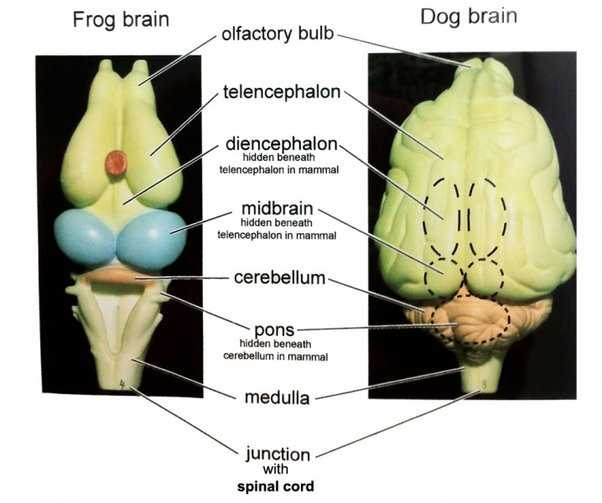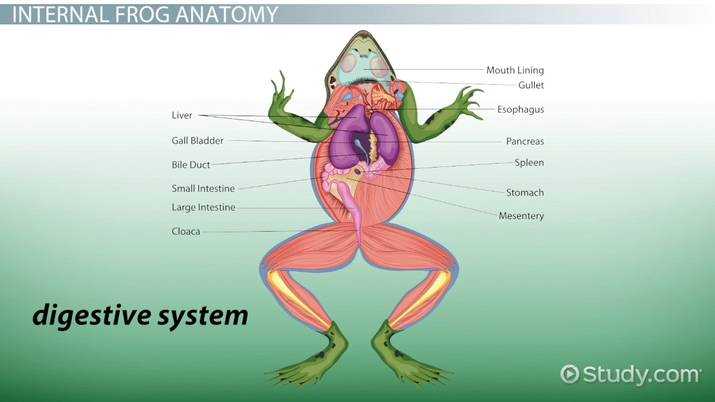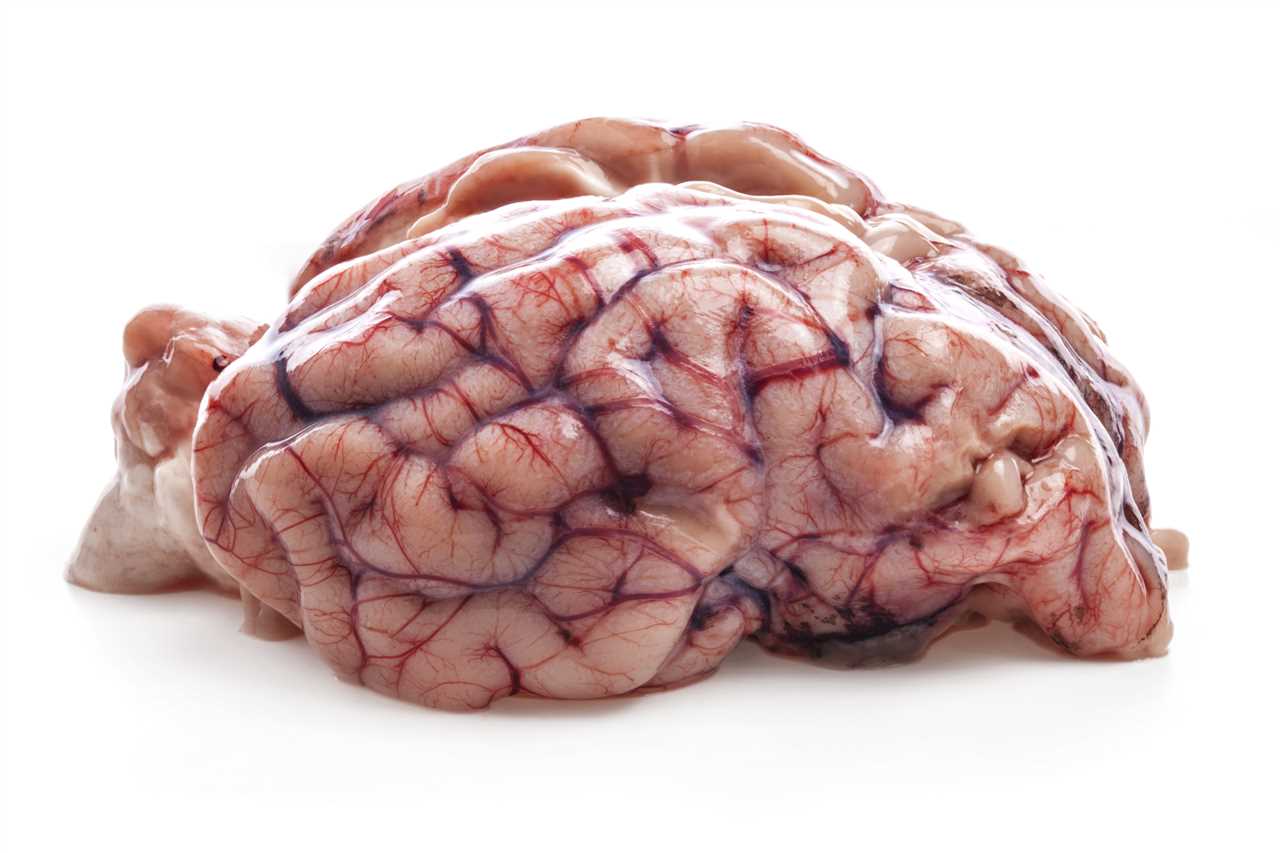
While the brain of a frog may not be as large or as complex as that of a human, it is nonetheless a vital organ that plays a significant role in a frog’s behavior and survival. The frog brain consists of several distinct regions, each responsible for different functions such as sensory perception, motor control, and memory formation.
So, while frogs may not have brains in the same sense that humans do, their neurological structures are well-adapted to meet their specific needs. Exploring the intricacies of frog neurology not only helps us better understand these fascinating creatures but also provides valuable insights into the diversity and complexity of life on Earth.
Overview
First, we will begin by discussing the basics of frog neurology. This will involve examining the structure of their brains and comparing them to mammalian brains. While frogs may have smaller and less complex brains than mammals, they still possess key components that allow them to exhibit various behaviors and respond to their environment.
Next, we will discuss the role of the brain in frog behavior. Frogs exhibit a wide range of behaviors, including hunting, mating, and communicating. We will explore how their brain structures and neural pathways facilitate these behaviors and what factors influence their behavior and decision-making processes.
As we move forward, we will delve into the complexity of frog nervous systems. While their brains may be relatively small, frogs have intricate neural circuits and pathways that allow for efficient and coordinated communication between different parts of their bodies.
The Basics of Frog Neurology
Frogs, unlike humans and mammals, have a less complex brain structure. However, they do possess a central nervous system that allows them to process information and respond to their environment.
The hindbrain, or medulla oblongata, is involved in controlling vital functions such as respiration and heart rate. It also plays a role in coordinating movements and maintaining balance. Lastly, the cerebellum is responsible for fine-tuning motor skills and coordinating muscular activity.
While a frog’s brain may not be as complex as a mammal’s, it still plays a crucial role in the frog’s ability to survive and thrive in its environment. It allows the frog to process sensory information from its surroundings, make decisions based on that information, and carry out the necessary motor responses.
One interesting aspect of frog neurology is its ability to regenerate and repair damaged neural tissue. In some cases, frogs can regrow parts of their brain after injury, which is a unique adaptation not found in mammals. This regrowth can help the frog regain lost function and continue to survive.
| Brain Region | Main Functions |
|---|---|
| Forebrain | Sensory processing, voluntary movements |
| Midbrain | Visual processing, reflex responses |
| Hindbrain | Vital function control, coordination of movements |
| Cerebellum | Motor skill refinement, coordination of muscular activity |
Comparing Frog Brains to Mammalian Brains

Frogs, like mammals, have brains that are essential for their survival and functioning. However, there are significant differences in the structure and complexity of frog brains compared to mammalian brains.
One major difference is the size of the brain. Mammals generally have larger brains in relation to their body size compared to frogs. This is due to the fact that mammals have more complex behaviors and cognitive abilities that require a larger brain to support them. Frogs, on the other hand, have simpler behaviors and do not possess the same level of cognitive abilities as mammals.
The Functions of Frog Brains
Frogs are fascinating creatures that have evolved unique adaptations to their environments. One of the most important organs in a frog’s body is its brain. While frogs may not have the same level of cognitive abilities as mammals, their brains serve crucial functions necessary for their survival.
One of the primary functions of a frog’s brain is to control its movement. The brain sends signals to the frog’s muscles, allowing it to leap, swim, and navigate its surroundings. This coordination is essential for hunting, mating, and escaping predators.
In addition to motor control, frog brains also play a role in sensory perception. Frogs have specialized structures in their brains that receive and interpret sensory information from the environment. This includes visual, auditory, and olfactory signals, allowing them to detect prey, avoid danger, and communicate with other frogs.
Furthermore, frog brains are involved in processing information related to reproduction. The brain controls the release of hormones that regulate sexual behavior and reproductive cycles. This is crucial for successful mating and the continuation of the frog species.
Frog brains also have a role in regulating basic bodily functions such as breathing, digestion, and temperature control. The brain communicates with other organs and systems in the body to ensure that these essential processes are functioning properly.
Conclusion
While frog brains may not possess the same level of complexity as mammalian brains, they are still remarkable organs that carry out essential functions for the survival of these amphibians. From motor control and sensory perception to reproductive behavior and bodily regulation, frog brains are a crucial component of their overall biology.
| Function | Description |
|---|---|
| Movement Control | Coordinates muscle activity for leaping, swimming, and navigating the environment. |
| Sensory Perception | Interprets visual, auditory, and olfactory signals to detect prey, avoid danger, and communicate. |
| Reproductive Regulation | Controls hormone release for sexual behavior and reproductive cycles. |
| Bodily Functions | Regulates breathing, digestion, and temperature control. |
How Do Frogs Process Information?
Frogs, like many other animals, have their own unique ways of processing information. While they may not have brains as complex as mammals, they rely on their rudimentary nervous systems to interpret the world around them and guide their behavior.
One way frogs process information is through sensory perception. They have specialized sensory organs that allow them to detect and interpret different stimuli in their environment. For example, their eyes are adapted to detect movement and colors, allowing them to locate prey and avoid predators.
In addition to vision, frogs also rely on their sense of hearing to process information. They have eardrums located on the sides of their heads that detect sound waves and transmit them to their brains. This enables them to communicate with other frogs through calls and also helps them detect potential threats or prey.
Another important aspect of information processing in frogs is their ability to learn and remember. While they may not have the same level of cognitive abilities as mammals, studies have shown that frogs are capable of learning and remembering certain tasks. For example, researchers have trained frogs to associate certain sounds or visual cues with rewards, demonstrating their ability to form associations and learn from past experiences.
Overall, frogs have adapted to their unique environments by developing specialized ways of processing information. While their brains may not be as complex as mammalian brains, they are still capable of interpreting sensory stimuli, learning from their experiences, and adjusting their behavior accordingly.
Sensory Perception in Frogs
One of the fascinating aspects of frog neurology is their sensory perception. Like many other animals, frogs rely on various sensory systems to gather information about their environment and interact with it.
Visual Perception: Frogs have well-developed visual systems that enable them to perceive and respond to visual cues. Their eyes are strategically positioned on the sides of their heads, allowing for a wide field of view and binocular vision. This adaptation helps them detect movement and locate prey or potential predators. Furthermore, frogs have specialized retinal cells that are sensitive to different wavelengths of light, allowing them to perceive colors to some extent.
Auditory Perception: Frogs are well-known for their ability to produce a variety of vocalizations, from simple croaks to complex mating calls. This vocalization behavior is governed by specialized brain regions that process auditory information. Frogs have a unique middle ear structure called the tympanum, which functions as a sound receptor. The vibrations from sound waves are transmitted through the middle ear to the inner ear, where they are converted into electrical signals that the brain can interpret.
Tactile and Pressure Sensation: Frogs also have a keen sense of touch and pressure sensation. Their skin is covered in sensory receptors, allowing them to detect physical contact with their environment. These receptors help them navigate their surroundings and engage in social interactions with other frogs. Additionally, frogs have specialized skin cells called “ampullae” that are sensitive to changes in water pressure. These organs help frogs detect movement and vibrations in aquatic environments.
Overall, frogs have a remarkable ability to perceive and interpret sensory information from their environment. Their neurology allows them to process visual cues, respond to auditory stimuli, and navigate through tactile and pressure sensation. This complex sensory perception is essential for their survival and reproductive success in diverse habitats.
The Role of the Brain in Frog Behavior
Frogs may be small creatures, but their brains play a crucial role in their behavior. The complex interactions between the frog’s brain, nervous system, and environment allow them to navigate their surroundings, find food, and reproduce.
Motor Control
The frog’s brain controls its movements and behaviors through a network of nerve cells called neurons. These neurons transmit electrical signals that allow the frog to perform various actions, such as jumping, swimming, and catching prey. The brain sends signals to the muscles to coordinate these movements effectively.
Learning and Memory
Frog brains also play a role in learning and memory formation. Studies have shown that frogs can learn and remember specific tasks, such as finding their way through a maze or recognizing predators. These abilities are connected to the brain’s ability to form and strengthen neural connections, which are essential for learning and memory storage.
Social Behavior
The brain also influences frog social behavior. Frogs use vocalizations, such as croaking, to communicate with one another. The brain controls the production of these vocalizations, allowing frogs to attract mates or deter rivals. Additionally, the brain processes sensory information and helps frogs recognize other individuals, which is crucial for social interactions and mating.
Environmental Adaptations
The frog’s brain is also responsible for helping it adapt to different environments. Frogs can adjust their behavior and physiology based on external cues, such as temperature, light, and humidity. These cues are processed and interpreted by the brain, allowing frogs to make necessary changes to survive in their specific habitats.
Do Frogs Have Complex Nervous Systems?
One of the fascinating questions in the field of frog neurology is the complexity of their nervous systems. While frogs may not have brains as complex as mammals, they still possess a highly specialized and efficient nervous system.
Frogs have a central nervous system composed of a brain and a spinal cord, just like mammals. However, their brains are considerably smaller and less developed. Despite their size, frog brains are capable of carrying out essential functions such as sensory perception, information processing, and coordinating behaviors.
Unlike mammals, frogs also have a unique peripheral nervous system that extends outside of the central nervous system. This peripheral nervous system allows frogs to sense and interact with their environment in remarkable ways.
The Complexity of Frog Nervous Systems
Although frog brains are not as complex as mammalian brains, they still exhibit a remarkable level of intricacy. The main difference lies in the size and organization of the brain structures.
One of the most remarkable features of frog nervous systems is their ability to perform complex behaviors with relatively small brains. Frogs are capable of exhibiting a wide range of behaviors, including mating rituals, predator detection, and prey capture. These behaviors require precise neural circuits and pathways to coordinate the necessary movements and responses.
The Specialized Adaptations of Frog Nervous Systems
In addition to their complex neural circuits and sensory perceptions, frog nervous systems have specialized adaptations that enhance their survival and reproductive success. For example, some frog species have developed unique behaviors, such as vocalizations, that require intricate neural control.
Frogs also have specialized brain structures that are unique to their species. These structures allow frogs to perform specific tasks, such as accurately calculating the distance and direction of prey or predators. These adaptations demonstrate the remarkable ability of frog nervous systems to adapt and evolve in response to their environment.
Frog Neural Circuits and Pathways
Neurological research on frogs has revealed fascinating insights into the complexity of their neural circuits and pathways. These intricate networks of interconnected neurons play crucial roles in coordinating various physiological functions and behaviors in frogs.
The neural circuits in frog brains exhibit a high degree of specialization. Different areas of the brain are responsible for processing specific types of sensory information, such as visual, auditory, and olfactory stimuli. For example, the optic tectum is a region in the frog’s brain that receives visual input and plays a crucial role in visual processing. Similarly, the midbrain auditory nuclei are involved in processing auditory information.
The neural pathways in frogs provide the structural framework for the transmission of signals between different parts of the nervous system. These pathways consist of bundles of nerve fibers that connect various brain regions and other parts of the body. They allow for the rapid and coordinated movement of information, enabling frogs to respond quickly to external stimuli.
Plasticity and Adaptability

Functional Consequences
The complex neural circuits and pathways in frog brains have important functional consequences. They enable frogs to exhibit a wide range of behaviors, including locomotion, feeding, mating, and communication. The integration and coordination of sensory information by these circuits allow frogs to navigate their environment, find food, avoid predators, and engage in social interactions.
Conclusion
Specialized Brain Structures in Frogs
Frogs may be small in size, but their brains are surprisingly complex. While they do not possess the same level of brain development as mammals, they still have specialized brain structures that enable them to carry out their various functions and behaviors.
One such specialized brain structure in frogs is the olfactory bulb, which is responsible for processing smells. Frogs rely heavily on their sense of smell to locate food, mates, and detect predators. The olfactory bulb in the frog’s brain is highly developed and allows them to detect and identify specific scents in their environment.
Another specialized brain structure in frogs is the optic tectum, which plays a crucial role in visual processing. Frogs have excellent vision and rely on their eyes to locate prey, avoid obstacles, and communicate with other frogs. The optic tectum in the frog’s brain receives visual information from the eyes and processes it to provide the frog with a clear and accurate representation of its surroundings.
Furthermore, frogs have a specialized brain structure called the cerebellum, which is involved in motor control and coordination. The cerebellum receives information from the frog’s sensory systems and helps coordinate movements, such as jumping, swimming, and catching prey. This structure allows frogs to move swiftly and efficiently in their aquatic and terrestrial environments.
Lastly, frogs have a specialized brain structure called the hippocampus, which is essential for learning and memory. The hippocampus helps frogs form spatial memories and navigate their surroundings. It also plays a significant role in various cognitive functions, such as social learning and recognition.

I’m Lena Adams—a product of an unconventional upbringing in the African wilderness. My father, a daring explorer of African wildlife, sparked my fascination with reptiles, a passion that intertwined with the tragic loss of my mother during an expedition, leaving an indelible mark on my life. Driven to understand the creatures that captivated my parents, I embarked on my journey, sharing insights about reptiles, frogs, and lizards on my website. Through my explorations and conservation efforts, I honour my family’s legacy while seeking connections—to the creatures, nature, and the mother whose presence I yearn to understand.
